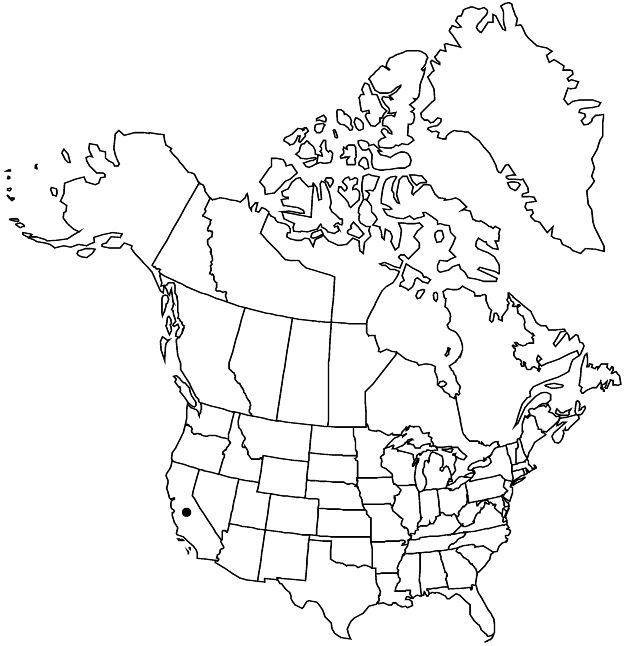Ceanothus purpureus
Fl. W. Calif., 258. 1901.
Shrubs, 1–2 m. Stems erect to ascending, not rooting at nodes; branchlets reddish-brown, sometimes glaucescent, rigid, glabrate. Leaves not fascicled, spreading to deflexed; petiole 0–2 mm; blade ± cupped, folded lengthwise adaxially, widely elliptic to widely obovate, 12–25 × 7–20 mm, base obtuse to cuneate, margins not revolute, spinose-dentate, teeth 7–15, apex rounded to sharply acute, abaxial surface pale green, sparsely strigillose, especially on veins, adaxial surface green to dark green, glabrous. Inflorescences axillary, 1.2–2.5 cm. Flowers: sepals, petals, and nectary deep blue to purple. Capsules 4–5 mm wide, lobed; valves smooth, horns subapical, prominent, slender, erect, intermediate ridges absent. 2n = 24.
Phenology: Flowering Feb–Apr.
Habitat: Rocky slopes and outcrops derived from volcanic substrates, chaparral, oak woodlands.
Elevation: 100–400 m.
Discussion
Ceanothus purpureus is endemic to the Vaca Mountains (Napa and Solano counties); it has been confused with C. jepsonii, which differs by its 6–8-merous flowers, rugose capsule horns, prominent ridges between the horns, and distribution on serpentine soils.
Selected References
None.
Lower Taxa
"thick" is not a number.
